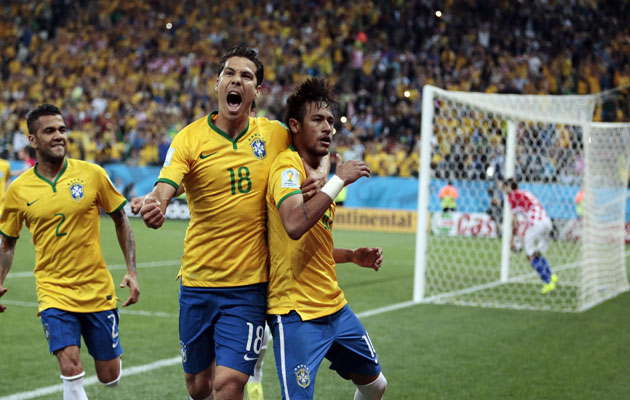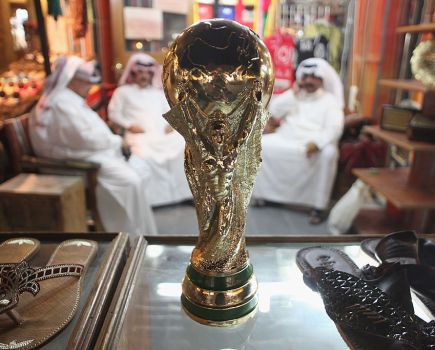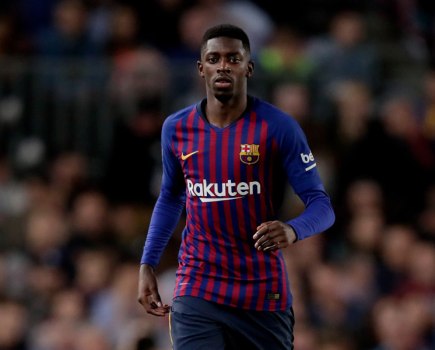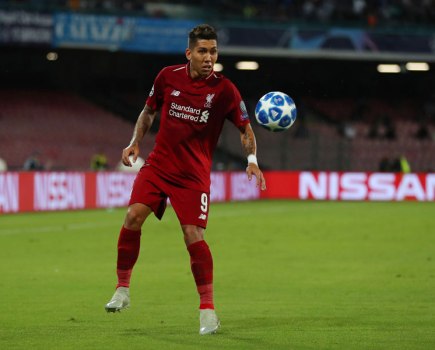Group A
17 June 2014
Brazil v Mexico, Estadio Castelao, Fortaleza, 20:00
Brazil
The pieces in Brazil’s jigsaw started to come together when Luiz Gustavo was installed as the holding midfielder. It balanced out the side and stemmed the flow of goals being conceded from the space in front of the centre-backs Thiago Silva and David Luiz. Gustavo’s presence also frees Paulinho to launch his well-timed forward runs. The fact that he is left-footed makes
it easier for him to protect the weaker side of the defence. All good in theory, but against Croatia, in last Thursday’s opening match, there were large spell were Luka Modric and Ivan Rakitic controlled the midfield.
Another change down the spine of the team introduced by Scolari was the return of a target-man centre-forward. Fred provides a reference point for a quick, dynamic midfield and his prowess with his back to goal helps bring Neymar into the game. Against Croatia, though, and notwithstanding his blatant dive for the penalty, he was largely anonymous.
The line of three behind Fred shows considerable mobility, with Neymar on the left usually the furthest forward. The all-round ability of Oscar enables him to drop deep to orchestrate the play in addition to ghosting into the box, although as we saw last week the Chelsea man was more effective surging down the right. Indeed in that opening match, he was arguably brazil’s best player and certainly their most inventive. The physical capacity of Hulk will see him bursting forward down the right flank. Hulk normally starts, but can be a useful impact sub. Again, like Fred, his impact in the first game was minimal.
Jo is an obvious direct alternative for Fred, while Willian can play across the attacking line. Hernanes could come in for Paulinho, while Fernandinho would be a slightly more defensive replacement.
There will be periods during matches where Scolari will seek to press the opposition high up the pitch, which is a relatively new concept for Brazil – and one which could add to the problems for referees. During the Confederations Cup the player who was most fouled was Neymar – a reflection both of his ability and of his capacity to draw challenges in areas from which his set-pieces can be so dangerous. But he – followed by Oscar – was also the player who committed most fouls as Brazil sought to stop their opponent’s counter-attacks at source. The officials will have lots of decisions to take, and with the home crowd howling for free-kicks, the pressure will be on. Neymar was booked in the Croatia game and was arguably fortunate to stay on the pitch when he elbowed Modric in the face.
Plan B?
Scolari’s principal tactical variation is to switch to 4-3-3, with Ramires coming in for Hulk. He will sit in alongside the two midfield holders, with Oscar and Neymar pushed up alongside Fred.
Mexico
Herrera puts his faith in wingbacks and Liga MX players
Herrera has adopted the attacking line-up used by former national coach Ricardo La Volpe in Germany 2006 to such an extent that he often seems to overlook the team’s stars in favour of those players that have already played under him at club level and who know his 5-3-2 system.
In their 1-0 victory over Cameroon, there was a fluidity to Mexico’s play that should have brought greater reward. Were it not for an incompetent linesman, the margin of victory would certainly have been greater.
In Herrera’s system the wingbacks play a big role and they are in charge of generating the side’s attacking thrust with well-timed forward runs. There’s only room for one anchorman and the other two midfielders are used more in box-to-box roles, recovering possession and offering support for the wide players. Of the two strikers, one usually operates as a pure centre-forward while the other takes up a more withdrawn position. The pair can, however, swap roles during the game.
It’s a very attack-minded system in which all the players have to be confident with the ball, but it is also one that can be very risky as up to seven players can be in the opposing side at the same time, leaving the anchorman and the three central defenders very exposed at the back.
Herrera has stated that he’s prepared to change his set-up if the need arises, but from what has been seen in this year’s friendlies that doesn’t seem to be the case. It’s safe to assume that Mexico’s games in Brazil will feature plenty of goals, although it remains to be seen how many of them will be scored by “El Tri”.
It seems that Herrera may well stick to his guns and use mostly local Liga MX players in his starting XI, with the only exceptions being Espanyol’s Hector Moreno and Porto pair Diego Reyes and Hector Herrera.
While there doesn’t seem to be a place in the starting line-up for talented players such as Giovani Dos Santos, the finals will give left-back Miguel Layun, box-to-box midfielder Carlos Pena and striker Oribe Peralta the chance to shine on the world stage. Peralta certainly managed that against Cameroon, scoring the only goal of the game and generally being the liveliest of Mexico’s forwards.
Plan B?
While Herrera is unlikely to be swayed from his 5-3-2 set-up, he could change the personnel. The most likely scenario will be to accommodate both Dos Santos and Peralta up front.







